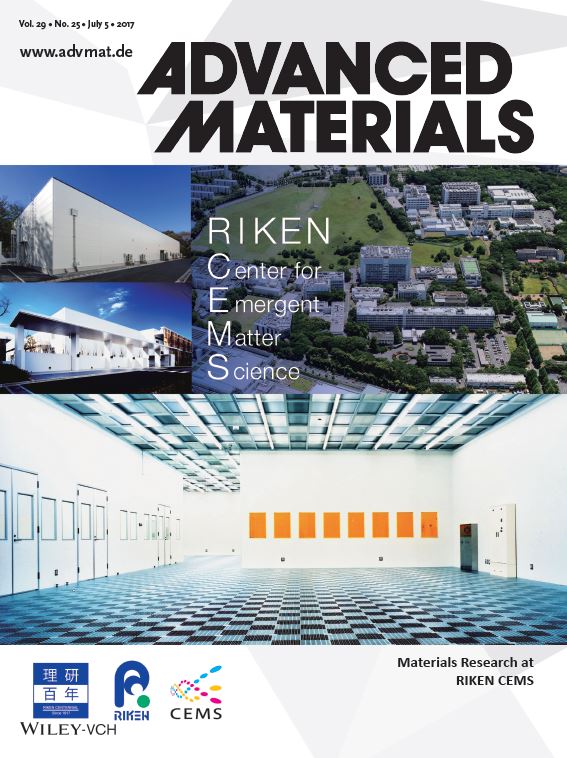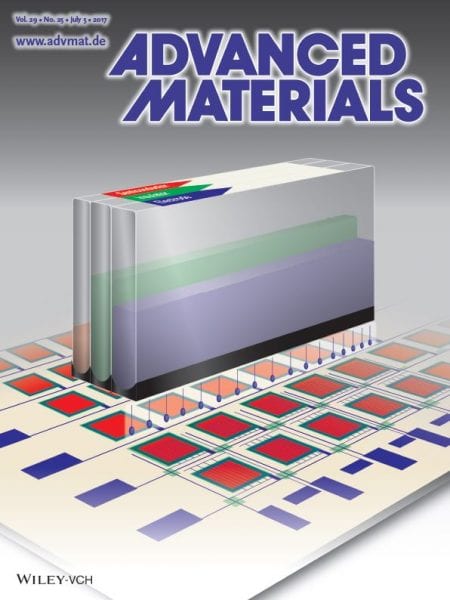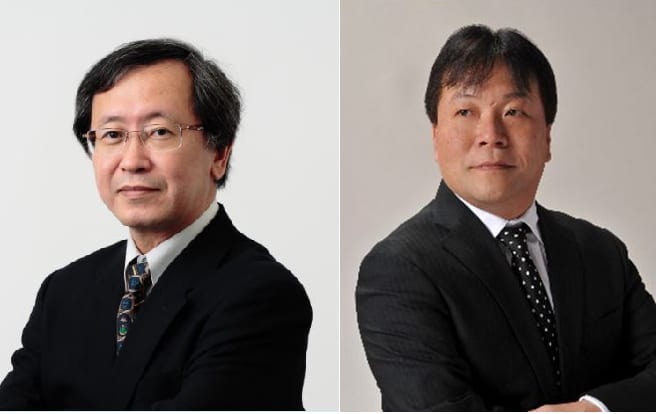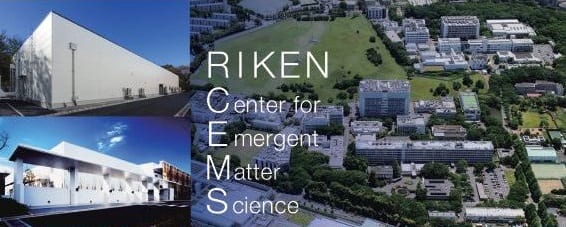
The front cover of the special issue (Advanced Materials 2017, volume 29, issue 25)
Issue 25/2017 of Advanced Materials is a special issue featuring research carried out at RIKEN-Center for Emergent Matter Science (CEMS). RIKEN-CEMS, based in Saitama, Japan, which lies just outside of Tokyo. RIKEN, established in 1917, is now Japan’s largest comprehensive research institution, where fundamental and applied research is carried out in physics, chemistry, computational science, biology, and medicine across nine different campuses throughout Japan.
RIKEN-CEMS is one of the major centers within RIKEN. It was established in 2013 as the first strategic research center focusing on materials science. Research at CEMS itself is focused on emergent phenomena in a diverse range of condensed-matter systems, aiming at the construction of new basic sciences that are both fundamentally important and technologically useful. Foremost among these is energy and environmental issues – contributing to a sustainable society is a key goal. Synergetic cooperation among the three research divisions within RIKEN-CEMS (the Strong Correlation Physics Division, the Supramolecular Chemistry Division, and the Quantum Information Electronics Division are promoted to realize the key research goals.
In recognition of the 100th anniversary of RIKEN, a collection of reviews showcasing the recent research activities at RIKEN-CEMS are featured in the issue. These areas can be broadly categorized into four areas with the main topics covered being:

The inside back cover of the issue, highlighting article number 1602736, where Kenjiro Fukuda and Takao Someya present an overview of printing of thin-film transistors and integrated circuits.
i) Materials and functions leading to novel electronic and spintronic devices:
Skyrmion-hosting magnets, Rashba semiconductors, ion-controlled electron doping, and quenching of spin and charge degrees of freedom.
ii) Theories and materials for energy conversion and transportation:
Photovoltaics from the viewpoint of quantum geomety in solids, the role of interfaces in organic photovoltaics, organic semiconductors, ion-controlled electron doping, and quenching of spin and charge degrees of freedom; superconductivity, and magnetocaloric materials.
iii) Soft materials with various functionalities:
Redox-responsive molecular systems, porous materials with highly oriented channgels, high-resolution printing for thin-film transistors and circuits, chirality amplification in the mesophases of organic molecules, and carbon-based materials.
iv) Advanced measurement techniques for materials research:
Electron holography and X-ray diffraction for the visualization of electron-density distributions in the weak chemical bonds of molecular compounds.

Yoshinori Tokura (left) and Takuzo Aida (right)
The issue was guest edited by Yoshinori Tokura, Director of RIKEN-CEMS and Takuzo Aida, director of the Supramolecular Chemistry Division at RIKEN-CEMS. Prof. Tokura’s area of interest is correlated-electron materials, focusing on the design and exploration for new interesting electronic properties and functions. Takuzo Aida’s research interests include optoelectronic soft materials, bioinspired macromolecules and materials, including “Aqua Materials”, and molecular and biomolecular machines.

















